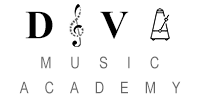Wolfgang Amadeus Mozart1756 – 1791
Mozart is sunshine
ANTONIN DVORAK (1841-1904)
Have you ever seen a cheetah or a jaguar running? They’re amazing; they run so fast, so gracefully – and so easily. What would they think if they saw a human being trying to run next to them?
In musical terms, Mozart was a bit like a cheetah or jaguar. Music just wasn’t difficult for him! He learnt to understand music as the learnt to understand speech; for him, it was just another language. Music was part of him, and he needed it like an animal needs food. As a child, Mozart would pounce on any new piece he was given. From the age of four, he started to play little pieces on the piano or harpsichord, and could learn them perfectly in half-an-hour. He started to compose at the age of five, and shortly after that, he became brilliant organist, an excellent violinist and an able singer. At the age of twelve, he composed his first opera, and was by then already a fine conductor. It must have looked funny when this little boy sternly conducted an orchestra of professionals three or four times his age. But he brought if off, because everybody realised that he was a total miracle.
Steven Isserlis
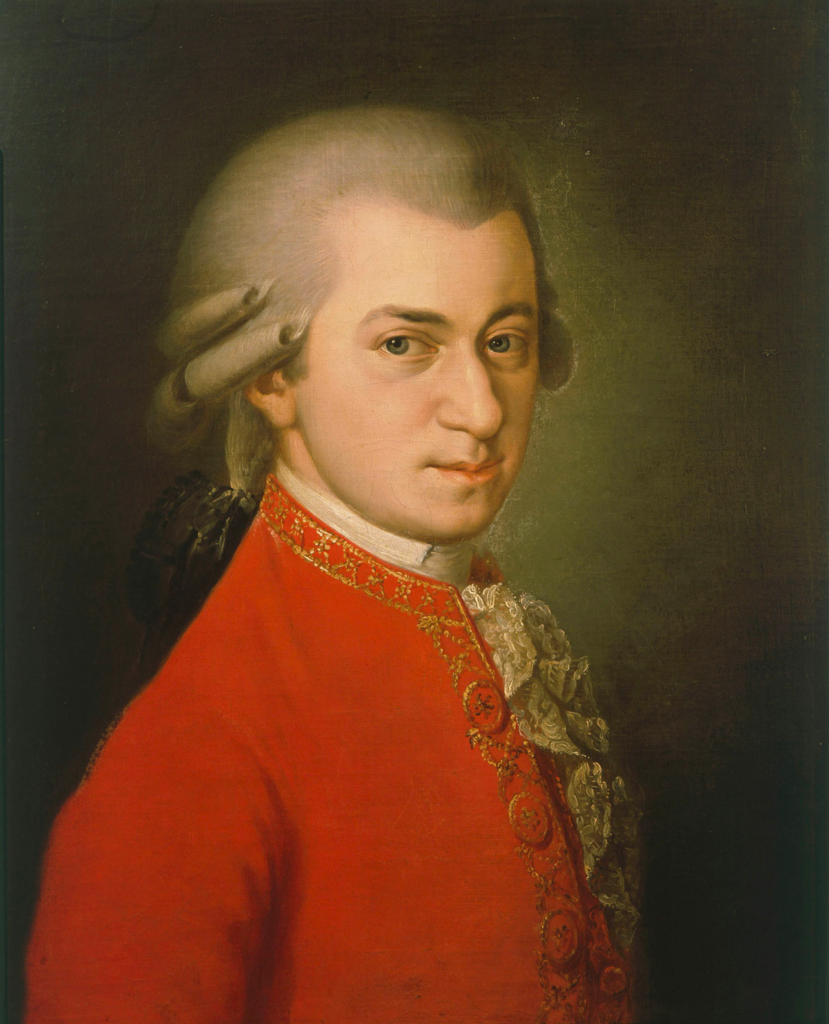
The “miracle whom God let be born in Salzburg” made his appearance on 27 January 1756, the last of seven children born to Leopold Mozart and his wife Anna Maria, and one of only two to survive infancy. Leopold Mozart – a talented violinist, and the author of a successful treatise on violin technique – played in the court orchestra of the Archbishop of Salzburg, was one of the most powerful prelates in Austria.
Mozart’s relationship with his father was central to his life. Leopold Mozart has been vilified as the archetypal domineering father, dragging his prodigiously talented son around the courts of Europe at an early age, not only subjecting him to the rigours of prolonged travel, but forcing him to display his skills on the keyboard to any bored aristocrat who would pay money to listen; then hectoring him when he grew older, trying to obstruct him from leaving a miserable existence in Salzburg for the excitements of Vienna, and interfering in his personal life.
Childhood
At the age of four, Wolfgang began to study keyboard and composition with his father. Wolfgang’s elder sister Maria Anna (Nannerl) was also a talented pianist, though once she reached adulthood, the conventions of the time obliged her to confine her talents to the domestic sphere. Leopold saw it as his duty to exhibit his exceptional children to the world. When they were six and 11 respectively, he took them to perform before the Elector of Bavaria at Munich, and the Empress Maria Theresa in Vienna.
In 1763 the whole family undertook a trip to Paris and London, where Wolfgang played to both French and English monarchs. By this time he was already composing: four early keyboard sonatas were published in Paris, and he wrote his first symphonies in London.
The family arrived back in Salzburg in November 1766. A further trip to Vienna failed to result in a hoped-for opera commission, but on returning home Mozart wrote one anyway, and La finta semplice (The Pretend Simpleton) was performed at the Archbishop’s palace in May 1769. Its performance was frustrated by intrigue on the part of the musicians, including the director of the theatres and the French troupe. Leopold realised that he would have to abandon its production. Dr Mesmer, whose healing techniques gave his name to the word “mersmerise”, commissioned a comic opera. Bastien and Bastienne, which was performed at his house.
Years of travel
In December 1769 Leopold took Wolfgang to Italy for the first time. After visits to Milan, Florence, Rome and Naples, Mozart received his first opera commission. Mitridate, re di ponto was performed at Christmas 1770 at the Milanese court; but although both it and a further opera, Lucio Silla, were well received, Mozart’s request for a job was turned down.
Back in Salzburg, Mozart settled down reluctantly as Konzertmeister to the court orchestra of a new (and less tolerant) Archbishop, and continued to compose. In January1775 he and his father travelled together for the last time, to Munich, for the performance of Mozart’s comic opera, La finta giardiniera (The Pretend Gardener). Two years later he asked for another period of leave, for an extended tip to Paris. The Archbishop promptly dismissed him, and Leopold, realising that his own position is now in jeopardy, decided not to go. Mozart set out his mother as chaperone.
The trip was a disaster. After a prolonged stay in Mannheim, where Wolfgang fell madly in love with a young singer called Aloysia Weber, he was peremptorily ordered by Leopold on to Paris. There he found the sophisticated French capital totally uninterested in an unknown provincial composer, now too old to be interesting as a prodigy. In Paris, there was no financial gain, only a severe loss, when Mozart’s mother died suddenly. Saddened and disillusioned, Mozart returned home.
Vienna: early years
Luckily, after a long eighteen months back in Salzburg, Mozart was commissioned to compose a major opera, “Idomeneo”, king of Crete to be produced in Munich. He had written several previously, but this was his first really great one. It was a triumph and even Leopold was happy!
To Leopold’s dismay, Mozart announced his intention of remaining in Vienna, where he would teach, compose, and give concerts. It was a bold idea, but ultimately an unsuccessful one. Austria was at war with the Turkish Empire, money was short, and fashions ephemeral, but for a few years, Mozart’s novelty value paid dividends.
Mozart got married, against his father’s wishes. His wife, Constanze Weber, was the younger sister of his first love, Aloysia, who had turned him down. Constanze was an amateur singer and Mozart described her as “kind-natured…not ugly, but not beauty either.
Constanze, who seems to have been a bit of a trollop, has always had a bad press.
However, Mozart seems to have been devoted to Constanze, although it is by no means clear that his devotion was reciprocated. They had six children, only two of which survived: Karl Thomas was born 1784, and Franz Xaver Wolfgang in 1791, just before Mozart died.
Vienna: middle years
For several years Mozart’s new career proved successful. He had a busy teaching and concert programme, for which he turned out a string of piano concertos, raising the genre to new heights of virtuosity, passion and expression.
Mozart’s first love was for opera and in 1785 he began work on a daring new operatic venture, based on Pierre Beaumarchais’s notorious French play La folle journee, ou le marriage de Figaro, which had been produced the previous year. This attack on aristocratic morals, disguised as a comedy, had already been banned in Vienna.
Le nozze di Figaro (The Marriage of Figaro) is one of the great monuments of Western art, a masterpiece of characterisation, quicksilver wit and emotional depth. But Vienna failed to appreciate it. By this time, Mozart’s arrogance had made him many enemies, including the powerful court composer, Antonio Salieri. Salieri and his friends were intensely jealous of Mozart’s abundant talent, and did all they could to sabotage the opera’s production. (Salieri may not literally have poised Mozart, as some later claimed, but he certainly stifled his rival’s career).
Vienna: last years
The final years of Mozart’s brief life were a dismal catalogue of financial worry, constant moves to cheaper apartments, and failing health, which was always weak in any case.
He finally achieved his desire of a court appointment, but only as chamber composer, writing dance music for court balls, for a meagre salary. By June 1788 he was writing begging letters to his fellow Freemasons, asking for loans. Don Giovanni had been performed with even less success than Figaro.
While working on the Magic Flute, he received two more commissions, one for an opera seris, La clemenza di Tito, which was produced in Prague in September 1791 and was to be the last major work of this type, and another for a Requiem Mass. The letter was commissioned anonymously, via an emissary dressed in grey, by a Viennese nobleman whose young wife had died. Mozart’s own health was failing by this time, and as he worked on the Requiem, he became obsessed by the idea that it would be his own, and that he as being poisoned.
There are many anecdotes about Mozart’s death. Other say Salieri poisoned him, some other that he caused the suicide of his mistress’ husband and the most probable that he had advanced kidney disease.
He died on the morning of 5th December of 1791 in his wife’s arms, who was left with two sons aged seven and four months.
Because he left little money, he was given the cheapest possible funeral in an unmarked grave.
Few mourners accompanied. The unfinished Requiem was completed after his death by Franz Sussmayr, one of his pupils.
References
The Greatest composers by Wendy Thomson
The lives and times of the Great Composers by Michael Steen
Great Composers by Steven Isserlis
Wikipedia
Carl Neff history of music
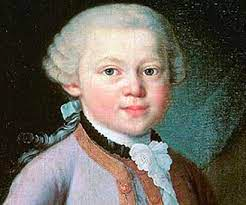
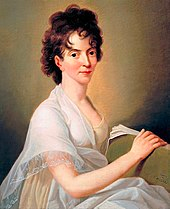
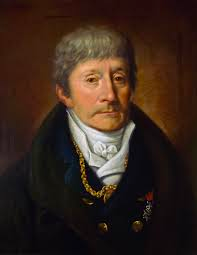

Mozart’s effect
In 1993 Rauscher et al.1 made the surprising claim that, after listening to Mozart’s sonata for two pianos (K448) for 10 minutes, normal subjects showed significantly better spatial reasoning skills than after periods of listening to relaxation instructions designed to lower blood pressure or silence. The mean spatial IQ scores were 8 and 9 points higher after listening to the music than in the other two conditions. The enhancing effect did not extend beyond 10-15 minutes. These results proved controversial. Some investigators were unable to reproduce the findings2,3,4 but others confirmed that listening to Mozart’s sonata K448 produced a small increase in spatial-temporal performance, as measured by various tests derived from the Stanford—Binet scale such as paper-cutting and folding procedures5,6,7 or pencil-and-paper maze tasks8. However, Rauscher has stressed that the Mozart effect is limited to spatial temporal reasoning and that there is no enhancement of general intelligence; some of the negative results, she thinks, may have been due to inappropriate test procedures9.
So, does the Mozart effect exist? The generality of the original positive findings has been criticized on the grounds that any Mozart effect is due to `enjoyment arousal’ occasioned by this particular music and would not take place in the absence of its appreciation. This interpretation is countered by animal experiments in which separate groups of rats were exposed, in utero followed by a postpartum period of 60 days, to Mozart’s piano sonata K448, to minimalist music by the composer Philip Glass, to white noise or to silence and then tested for their ability to negotiate a maze. The Mozart group completed the maze test significantly more quickly and with fewer errors (P <0.01) than the other three groups; thus, enjoyment and musical appreciation is unlikely to have been the basis of the improvement10.
Go to:
LOCALIZATION OF MUSIC PERCEPTION AND SPATIAL IMAGING WITHIN THE BRAIN
An explanation for the results obtained after listening to music may lie in the manner in which music and spatial imaging are processed within the brain. There have been many studies on the localization of music perception. Techniques such as positron emission tomography (PET) and functional magnetic resonance scanning, together with studies on localized brain lesions, have shown that listening to music activates a wide distribution of brain areas. The primary auditory area lies classically in the transverse and superior temporal gyri, but particular components of musical appreciation involving rhythm, pitch, metre, melody, and timbre are processed in many different areas of the brain. These range from the prefrontal cortex and superior temporal gyrus to the precuneus of the parietal lobe, with much interconnection of the different networks activated11,12,13. Rhythm and pitch discrimination are processed mainly in the left hemisphere whereas timbre and melody are found chiefly in the right. Appreciation of metre does not appear to show hemispheric preference.
Brain areas concerned with mental imaging as tested by spatial temporal tasks (such as the building of three-dimensional cube assemblies in sequence) were also mapped by PET scanning14. The results show that the areas activated include the prefrontal, temporal and precuneus regions which overlap with those involved in music processing. It is suggested, therefore, that listening to music would prime the activation of those areas of the brain which are concerned with spatial reasoning.
Go to:
LONG-TERM EFFECTS OF MUSIC ON THE BRAIN
The original experiments on adults exposed to Mozart’s music were of short duration only. In related experiments15, long-term effects of music were studied in groups of pre-school children aged 3-4 years who were given keyboard music lessons for six months, during which time they studied pitch intervals, fingering techniques, sight reading, musical notation and playing from memory. At the end of training all the children were able to perform simple melodies by Beethoven and Mozart. When they did they were then subjected to spatial-temporal reasoning tests calibrated for age, and their performance was more than 30% better than that of children of similar age given either computer lessons for 6 months or no special training (P <0.001). The improvement was limited to spatial-temporal reasoning; there was no effect on spatial recognition. The effect lasted unchanged for 24 hours after the end of the music lessons but the precise duration of the enhancement was not further explored. The longer duration of the effects than in previous reports was attributed to the length of exposure to music and the greater plasticity of the young brain. In further experiments of this kind it has been claimed that the enhancement of spatial-temporal reasoning in children after piano training has resulted in significantly greater scores in higher mathematics16.
Go to:
MUSIC AND THE ELECTROENCEPHALOGRAPHIC PATTERN
Attempts have been made to investigate the electrical discharge patterns of brain areas after exposure to music. In one study, listening to the Mozart sonata K448 for 10 minutes, in contrast to listening to a short story, resulted in enhanced synchrony of the firing pattern of the right frontal and left temporoparietal areas of the brain, which persisted for 12 minutes6. Listening to the sonata was also accompanied by increased power of the beta spectrum of the electroencephalogram in the right temporal, left temporal and right frontal regions17. In a further study, listening to music (not that of Mozart) also resulted in greater beta power, particularly in the area of the precuneus bilaterally18.
Go to:
MOZART EFFECT ON EPILEPSY
A more impressive indication of a Mozart effect is to be seen in epilepsy. In 23 of 29 patients with focal discharges or bursts of generalized spike and wave complexes who listened to the Mozart piano sonata K448 there was a significant decrease in epileptiform activity as shown by the electroencephalogram (EEG)19. Some individual patients showed especially striking improvement. In one male, unconscious with status epilepticus, ictal patterns were present 62% of the time, whereas during exposure to Mozart’s music this value fell to 21%. In two other patients with status epilepticus continuous bilateral spike and wave complexes were recorded 90-100% of the time before the music, suddenly falling to about 50% 5 minutes after the music began. The fact that improvement took place even in a comatose patient demonstrates again that appreciation of the music is not a necessary feature of the Mozart effect.
To determine whether this music could exert a longer effect, studies were conducted in an eight-year-old girl with a particularly intractable form of childhood epilepsy, the Lennox—Gastaut syndrome, with many drop attacks accompanied by bilateral spike and wave complexes and focal discharges from the right posterior temporal area20. Mozart’s sonata was played every 10 minutes for each hour of the day when she was awake. At the end of the waking period the number of clinical seizures had fallen from 9 during the initial four hours to one during the last four hours and the number of seconds during which general discharges occurred fell from 317 to 178. The following day the number of attacks was two in seven and half hours.
Go to:
SPECIFICITY OF MOZART’S MUSIC
To what extent are the changes attributable specifically to Mozart’s music? Following the initial experiments of Rauscher et al.1 most researchers have used Mozart’s double piano sonata K448, which the Mozart authority Alfred Einstein called `one of the most profound and most mature of all Mozart’s compositions’, but his piano concerto no 23 in A major K488 also proved to be effective8. Some investigators observed that no enhancement of spatial temporal tests was seen after the minimalist music of Philip Glass5, and there was no improvement in epileptiform EEG tracings after old-time pop music19. Rideout et al., however, report that a contemporary composition by the Greek-American musician Yanni, which they suggest is similar to the Mozart sonata in tempo, structure, melody and harmony, was also effective7. In an attempt to determine the physical characteristics which were responsible for the Mozart effect, Hughes and Fino21 subjected a wide range of music to computer analysis. As many as 81 selections of Mozart, 67 of J C Bach, 67 of J S Bach, 39 of Chopin, and 148 from 55 other composers were analysed. The characteristic shown by much of Mozart’s music and shared with the two Bachs was a high degree of long-term periodicity, especially within the 10-60 s range.
Another similarity between the music of Mozart and the two Bachs was the emphasis on the average power of particular notes, notably G3 (196 Hz), C5 (523 Hz) and B5 (987 Hz). In contrast, Philip Glass’ minimalist music and old-time pop music, which had both proved without effect on spatial behavioural tasks or on epilepsy, showed little long-term periodicity. It is suggested that music with a high degree of long-term periodicity, whether of Mozart or other composers, would resonate within the brain to decrease seizure activity and to enhance spatial-temporal performance.
Go to:
CONCLUSION
An enhancement of spatial-temporal reasoning performance after listening to Mozart’s music for 10 minutes has been reported by several, but not all, researchers. Even in the studies with positive results the enhancement is small and lasts about 12 minutes. The effect varies between individuals and depends upon the spatial tasks chosen; general intelligence is not affected. Rather more impressively, there is a beneficial effect on some patients with epilepsy. The results are not specific to Mozart’s compositions but the exact musical criteria required have not been completely defined.
The practical use of such observations is as yet uncertain, especially since many of the experiments relate only to short listening periods to Mozart’s piano sonata K448. More studies are necessary, involving longer-term exposure to Mozart and to a wide selection of other composers, before the effect can be fully assessed.
Go to:
References
1. Rauscher FH, Shaw GL, Ky KN. Music and spatial task performance. Nature 1993;365: 611 [PubMed] [Google Scholar]
2. Chabris CF. Prelude or requiem for the `Mozart effect’? Nature 1999;400: 826-7 [PubMed] [Google Scholar]
3. Steele KM, Dalla Bella S, Peretz I, et al. Prelude or requiem for the `Mozart effect’? Nature 1999;400: 827. [PubMed] [Google Scholar]
4. Newman J, Rosenback JH, Burns IL, et al. An experimental test of “the Mozart effect”: does listening to his music improve spatial ability? Percept Motor Skills 1995;81: 1379-87 [PubMed] [Google Scholar]
5. Rauscher FH, Shaw GL, Ky KN. Listening to Mozart enhances spatial-temporal reasoning: toward a neurophysiological basis. Neurosci Lett 1995;185: 44-7 [PubMed] [Google Scholar]
6. Rideout BE, Laubach CM. EEG correlates of enhanced spatial performance following exposure to music. Percept Motor Skills 1996;82: 427-32 [PubMed] [Google Scholar]
7. Rideout BE, Dougherty S, Wernert L. Effect of music on spatial performance: a test of generality. Percept Motor Skills 1998;86: 512-14 [PubMed] [Google Scholar]
8. Wilson TL, Brown TL. Re-examination of the effect of Mozart’s music on spatial task performance. J Psychol 1997;131: 365-70 [Google Scholar]
9. Rauscher FH. Comment. Nature 1999;400: 827. [PubMed] [Google Scholar]
10. Rauscher FH, Robinson KD, Jens JJ. Improved maze learning through early music exposure in rats. Neurol Res 1998;20: 427-32 [PubMed] [Google Scholar]
11. Warren JD. Variations on the musical brain. J R Soc Med 1999;92: 571-5 [PMC free article] [PubMed] [Google Scholar]
12. Platel H, Price C Baron JC, et al. The structural components of music perception: a functional anatomical study. Brain 1997;120: 229-43 [PubMed] [Google Scholar]
13. Ligeois-Chauvel C, Peretz I, Babai M, et al. Contribution of different cortical areas in the temporal lobes to music processing. Brain 1998;121: 1853-67 [PubMed] [Google Scholar]
14. Mellet E, Tzourio N, Crivello F, et al. Functional anatomy of spatial imagery generated from verbal instructions. J Neurosci 1996;16: 6504-12 [PMC free article] [PubMed] [Google Scholar]
15. Rauscher FH, Shaw GL, Levine LJ, et al. Music training causes longterm enhancement of preschool children’s spatial-temporal reasoning. Neurol Res 1997;19: 2-8 [PubMed] [Google Scholar]
16. Graziano AB, Peterson M, Shaw GL. Enhanced learning of proportional maths through music training and spatial-temporal reasoning. Neurol Res 1999;21: 139-52 [PubMed] [Google Scholar]
17. Sarnthein J, von Stein A, Rappelsberger P, et al. Persistent patterns of brain activity: an EEG coherence study of the positive effect of music on spatial-temporal reasoning. Neurol Res 1997;19: 107-16 [PubMed] [Google Scholar]
18. Nakamura S, Sadato N, Oohashi T, et al. Analysis of music-brain interaction with simultaneous measurement of regional blood flow and electroencephalogram beta rhythm in human subjects. Neurosci Lett 1999;275: 222-6 [PubMed] [Google Scholar]
19. Hughes JR, Daaboul Y, Fino JJ, et al. The Mozart effect on epileptiform activity. Clin Electroencephalogr 1998;29: 109-19 [PubMed] [Google Scholar]
20. Hughes JR, Fino JJ, Melyn MA. Is there a chronic change of the “Mozart effect” on epileptiform activity? A case study. Clin Electroencephalogr 1999;30: 44-5 [PubMed] [Google Scholar]
21. Hughes JR, Fino JJ. The Mozart effect: distinctive aspects of the music—a clue to brain coding? Clin Electroencephalogr 2000;31: 94-103 [PubMed] [Google Scholar]
